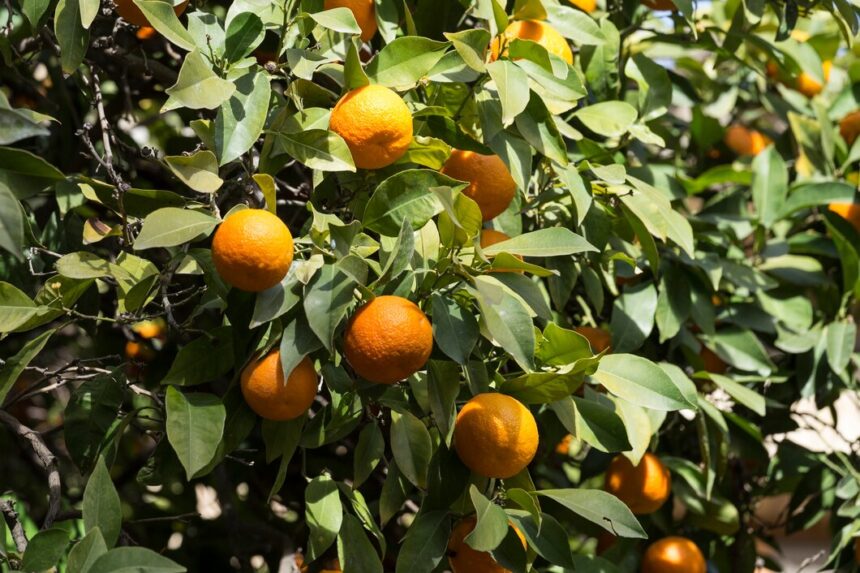Greasy Spot is a fungal disease caused by Mycosphaerella citri, affecting tangerine trees and other citrus varieties. Early identification is crucial for effective management. Here are ten early signs that your tangerines might be suffering from Greasy Spot:
- Small, Water-soaked Lesions: Look for small, water-soaked lesions on the leaves. These lesions start as small spots that appear greasy or oily.
- Yellowing Around Lesions: As the disease progresses, the area around the lesions may turn yellow, creating a noticeable halo effect on the leaves.
- Leaf Drop: Infected leaves may begin to drop prematurely. This is a response to the tree’s attempt to minimize the spread of the disease.
- Raised Lesions: Over time, the lesions on the leaves may become raised and form a rough texture, often surrounded by a yellowish ring.
- Dark, Sunken Spots on Fruit: The disease can also affect fruit, leading to dark, sunken spots with an oily appearance, reducing fruit quality and marketability.
- Premature Fruit Drop: Infected tangerines may drop from the tree before they reach maturity. This premature fruit drop is often a result of the tree’s response to the disease.
- Reduced Fruit Size: Affected fruit may be smaller than normal due to the disease disrupting normal fruit development.
- Abnormal Leaf Veins: The disease can cause discoloration or abnormalities in the leaf veins, making them more pronounced and discolored compared to healthy leaves.
- Moldy Appearance: In severe cases, the lesions on the leaves or fruit may develop a moldy appearance, indicating fungal growth.
- Stunted Growth: The overall growth of the tree may be stunted as the disease impacts its ability to photosynthesize and take up nutrients effectively.
Management Tips:
- Fungicide Application: Apply appropriate fungicides as a preventive measure and during the growing season to control the spread of the disease.
- Prune Infected Parts: Regularly remove and dispose of infected leaves and fruit to minimize the spread.
- Improve Air Circulation: Enhance airflow around the tree by proper pruning and spacing to reduce humidity, which can favor fungal growth.
- Maintain Tree Health: Keep your tangerine trees well-watered and fertilized to improve their overall health and resilience against diseases.
By recognizing these early signs and taking proactive measures, you can help safeguard your tangerine trees from the damaging effects of Greasy Spot and ensure a healthy and productive harvest.
Join 'Farmers Mag' WhatsApp Channel
Get the latest Farming news and tips delivered straight to your WhatsApp
CLICK HERE TO JOIN






